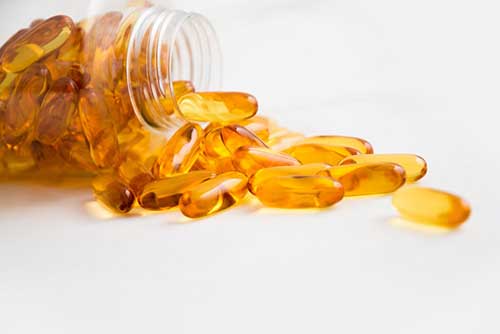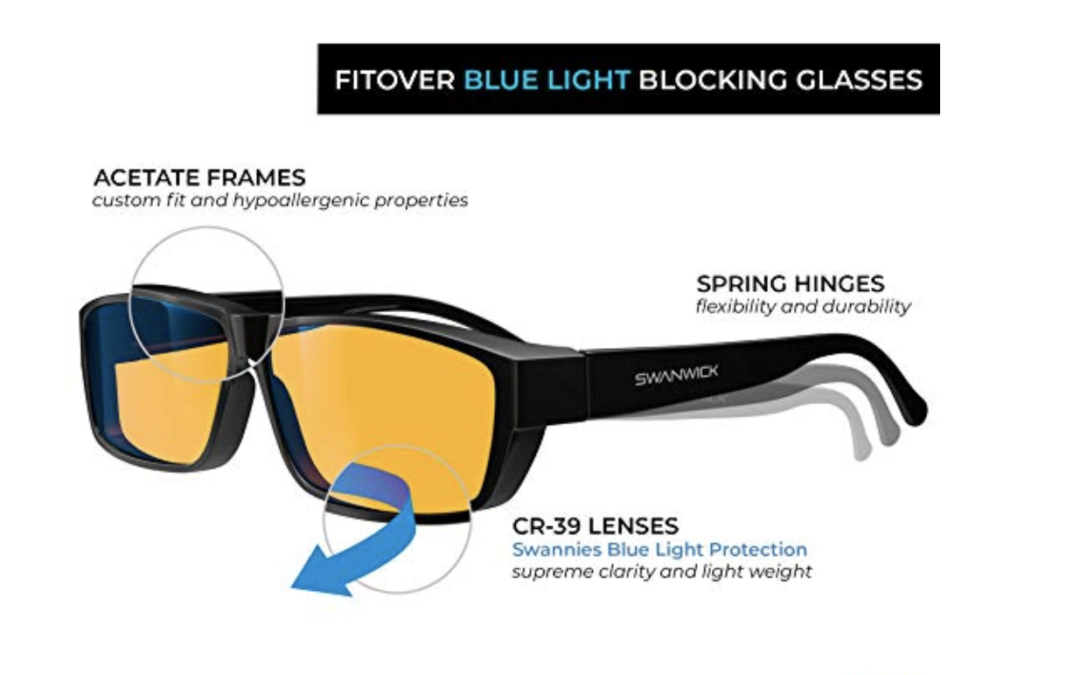Blocking blue light with yellow tinted lenses
As I mentioned in a the article for Pattern 8: Rest, sleep hygiene is very important to rest and overall health and wellness. This is because the body heals and the brain detoxifies during sleep. When something interrupts your sleep, the effects ripple out across your entire life, manifesting as clouded thinking and forgetfulness, impaired judgment and decision making, weakened physical performance, sugar cravings (leading to weight gain, insulin resistance, and diabetes), Alzheimers, and all the cascading diseases and injuries that stem from these. A ubiquitous source of sleep deprivation is artificial light in general, as well as the gadgets that have assimilated us into a hive mind (which emit blue light in particular). What does this have to do with yellow tinted lenses?
It has become much more common knowledge that we should avoid tv, tablets, computers, phones, and other devices an hour or so before bed. We know they keep us engaged and stimulated, which in itself prevents relaxation. Lots of people also recognize that the LEDs in the screens break down serotonin and disrupt the sleep cycle. In short, it’s very common now to understand that overexposure to blue light is bad for sleep and thus bad for health.
But why?
Photoceptors
Back in the last century when I was in high school, biology class taught me the eye has only rods and cones. These are the structures at the backs of the eyes (the retina) that send the brain information about image and color. Rods make up the hugest portion, but they don’t convey color. Cones are sensitive to wavelengths of light that we think of as red, blue, and green. They are far fewer, and it’s for this reason we lose the ability to distinguish color in lower light (e.g. dusk, dawn, night, caves, dark rooms, deep water, romantic restaurants, dance clubs, etc.).
But more recent discoveries have added a new class of photoreceptors, and these have absolutely nothing to do with color, depth perception, clarity, or anything we consider “vision” (the creation of images). But these cells are affected by yellow tinted lenses. According to a study called “Effects of blue light on the circadian system and eye physiology,”
In mammals, photoreception occurs only in the retina by three types of photoreceptor: cones, rods, and the intrinsically photosensitive retinal ganglion cells (ipRGCs). The classical photoreceptors (e.g., rods and cones) are mostly responsible for the image-forming vision, whereas the ipRGCs play a major role in non-image-forming photoreception, that is, the photoreceptive system that regulates circadian photic entrainment, pupillary light response, and other important biologic functions. (Tosini, et al)
Something that distinguishes these ipRGCs is their connection to the brain. They do not send signals to the part of the brain that interprets images. They connect, via the retinohypothalamic tract (RHT) from the eye into the hypothalamus. This is the part of the brain that controls all the circadian rhythms of the body.
Hypothalamus
The hypothalamus controls homeostasis in the body. It regulates a whole host of functions, including body temperature, kidney function, reproductive hormones, and levels of an enzyme called Arylalkylamine N-acetyltransferase (AANAT). AANAT converts serotonin into N-acetylserotonin (NAS), and NAS is then converted to melatonin in the pineal gland.
Light hitting the ipRGCs stimulates the hypothalamus to command the body to produce cortisol and suppress melatonin. Darkness removes the stimulus of the ipRGCs, which then causes the hypothalamus to “flip a switch.” Cortisol is suppressed in favor of melatonin. Interrupting this switch by stimulating ipRGCs triggers cortisol, which then recharges the body for wakefulness. That is specifically what undermines healthful rest, and yellow tinted lenses help to minimize this.
Color Theory
Our brain interprets different frequencies of visible light as color. What we think of as red has the longest wave length, and these wave lengths get shorter as we progress through the spectrum. Ergo orange, yellow, and green are all shorter than red. Shortest of all are blue and purple. Blue light is the very specific frequency that influences sleep, because we have adapted to respond to it particularly. Blue light is the trigger in the sky that causes us to wake up and start hunting and gathering.
Blue light scatters a great deal, making it very stimulating. This scatter is readily apparent on foggy days. It’s the reason drivers wear yellow glasses to improve clarity during storms. Baseball players wear yellow lenses to improve depth perception. The lenses reduce that glaring blue light, which quickly exhausts the eyes and can lead to headaches and eye strain.
Overexposure to blue light can also cause physical damage to the tissues and cells in our eyes. For these reasons, blue light blasting out at us all day and night can impair both sleep and the general health of the eyes. Cataracts, macular degeneration, and other forms of sight impairment result from extended exposure to this frequency of light. It’s important to wear UVA/UVB/blue light blocking lenses outside during the day to protect the eyes and reinforce healthy sleep patterns. You need safe exposure to daylight to reset your internal clock and get optimal sleep later. I prefer dark lenses outside during the day and yellow tinted lenses inside at night; however, you can find options that don’t darken or tint the world in gold (but why wouldn’t you want to see the world in gold??).
In elementary school your art teacher taught you the primary colors are red, yellow, and blue. This is for pigment. Pigment is a filter, but we’ll come back to that. The primary colors of light are red, blue, and green. Combining red and blue gives magenta; red plus yellow yields green; and green with blue makes a sky blue color called cyan. Adding all these lights together creates white. This additive process yields new colors.
Pigments, tints, and filters, on the other hand, absorb certain frequencies to reveal colors that are then free to bounce into your eyes. Filtering all color leaves black. This is a subtractive process. So then: Yellow light is red plus green, but yellow paint is every color minus red and green.
Yellow tinted lenses look yellow, because they are allowing red and green light to enter your eyes. How do they do this? By absorbing blue. This is why they help you maintain a proper circadian rhythm: They prevent the stimulation of ipRGCs. This in turn interrupts their signaling to the hypothalamus, which then tells the pineal gland to produce melatonin. This mechanism allows melatonin to build up and put your entire body into sleep mode. If you want a referral, these are the yellow tinted glasses I got from Amazon, and they make me start yawning within minutes of putting them on.
Recent Updates

Glycemic Index vs Glycemic Load
This score indicates how damaging a food will be to your blood sugar levels. Foods that score 0-55 are rated low impact (and thus presumed to be better for diabetics and those looking to maintain healthy weight and/or body fat ratios), but this is not the whole picture.

Caffeine: 14 better options to ease SAD
Nearly a year ago to the dot, I wrote an article about Seasonal Affective Disorder (SAD), but there I focused on the importance of getting access to a full range spectrum of light. Here I’d like to focus on caffeine and sleep’s effect on SAD. I’ll also offer suggestions for what to do to help you feel better on the dark days.

Avoid fish oil supplements
I don’t generally promote supplements. Most of them play to specific, isolated points of medical research to serve as a magic pill. One remarkable example of this is fish oil.



